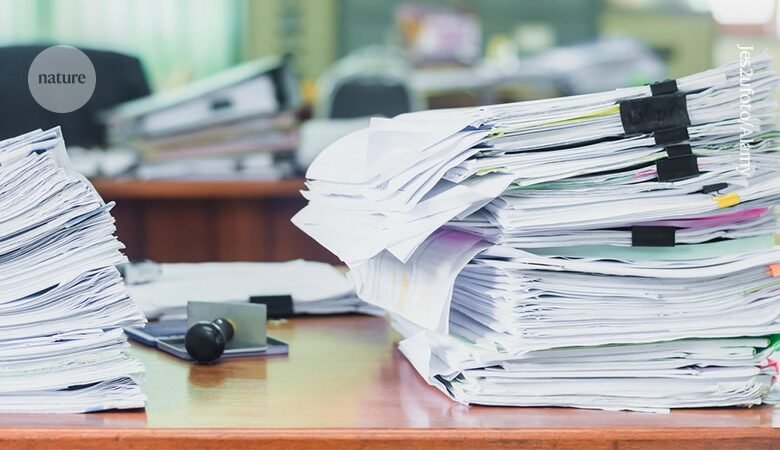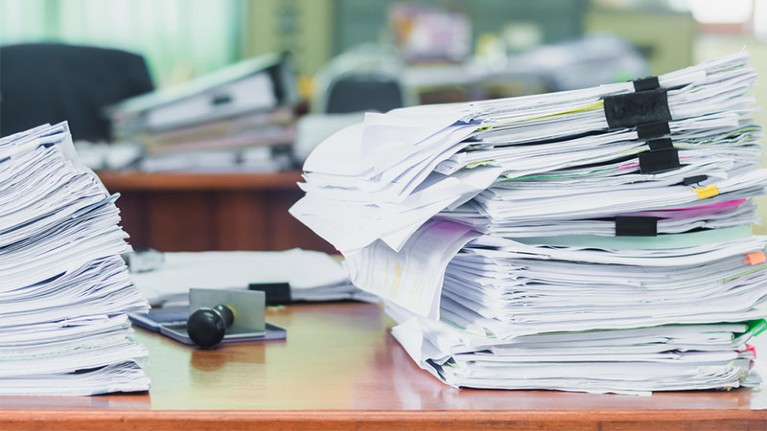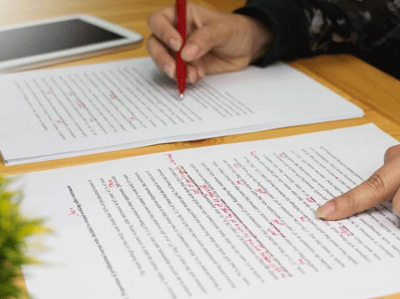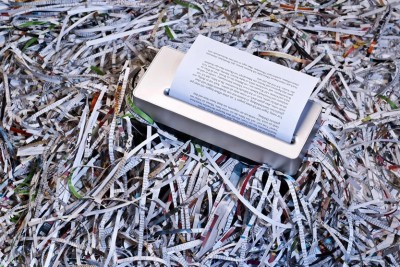

Paper mills often sell authorships to researchers on nonsense papers.Credit: Jes2ufoto/Alamy
A high-profile group of funders, academic publishers and research organizations has launched an effort to tackle one of the thorniest problems in scientific integrity: paper mills, businesses that churn out fake or poor-quality journal papers and sell authorships. In a statement released on 19 January, the group outlines how it will address the problem through measures such as closely studying paper mills, including their regional and topic specialties, and improving author-verification methods.
“There’ve been too many empty words. This is intended to actually deliver,” says Deborah Kahn, an elected council member of the Committee on Publication Ethics (COPE), a non-profit organization in Eastleigh, UK, and co-chair of the steering group of United2Act, which produced the consensus statement.
The fight against fake-paper factories that churn out sham science
“Paper milling isn’t an operation, it isn’t an organization: it’s a culture,” says data scientist Adam Day, who founded Clear Skies in London, which has developed a detection tool called The Papermill Alarm. Paper mills have been creating a problem for a long time, he says. “And it’s been ignored for a long time.”
Estimates suggest that hundreds of thousands of paper-mill publications are polluting the scientific literature. Paper mills often sell authorships on bogus papers to researchers trying to pad their CVs. One analysis indicates that some 2% of all scientific papers published in 2022 resembled paper-mill productions. Detecting these articles is difficult — although there are growing technological efforts to spot them — and shutting down the operations that produce them is even harder. Researchers are also concerned that the rise of generative artificial intelligence (AI) tools will exacerbate the problem by providing more ways to quickly generate fake papers that can dodge current detection methods.
How big is science’s fake-paper problem?
Five-point plan
United2Act’s statement is the outcome of a summit last May that was convened by COPE and the International Association of Scientific, Technical and Medical Publishers (STM), based in Oxford, UK. Researchers, research-integrity analysts, publishers and funders attended the meeting, and produced five areas that need action, enshrined in the statement. Each point has an associated working group, which will: improve education and awareness of the problem; conduct detailed research into paper mills; improve post-publication corrections; support the development of tools to verify the identities of authors, editors and reviewers; and ensure that the groups across publishing that are tackling the issue communicate.
Signatories to the statement include the prestigious funder the European Research Council, the publishing-services company Clarivate and major publishers including Elsevier, Wiley and Springer Nature. (Nature is editorially independent of its publisher, Springer Nature.)
More than 10,000 research papers were retracted in 2023 — a new record
“The consensus statement was really just the basis for what we’re going to do next,” says Kahn. With the working and steering groups, she hopes that action against paper mills will follow.
Deep study
Most of the groups have already held their first meetings. Anna Abalkina, a social scientist at the Free University of Berlin and an independent research-integrity analyst, attended the summit. She sits on three of the five working groups, including the ‘research group’, which will take a scholarly approach to studying paper mills to fill in knowledge gaps about their status and scale. Abalkina hopes the group will publish two or three papers on its work.
AI intensifies fight against ‘paper mills’ that churn out fake research
She adds that this group won’t produce results quickly, because its members are from a range of specialties, including publishers, researchers and sleuths — people, including Abalkina, who work out where the paper mills are and who’s running them. But “this is the most important advantage of these working groups, because they unite experts from different spheres”, says Abalkina.
The ‘education and awareness group’ will develop educational aids on paper mills and how they operate, says Kahn. “It brings together those who already have training with people that need it,” she says. “Because of language and cultural differences, it is important to tailor the training to the audiences.”
Paper-mill operations have been identified in south Asian countries, as well as in China, Russia and Iran.
Data for action
To ensure that action follows, Kahn has asked each group to report on its progress by June, when she will update attendees of the World Conference on Research Integrity in Athens, Greece, the most high-profile meeting on the subject.
Day, who wasn’t involved in the statement, welcomes it. He would like to see more detail on what the working groups will be doing, so that people like him can apply it to their own work. His company has identified locations of paper mills and their leaders. But distributing that information is difficult, says Day. “We know where the problems are. We know who is responsible for a lot of it. And that seems like actionable data,” he says. “But it is going to be up to other stakeholders to work out how they want to act on that.”
Other initiatives are tackling paper mills, and the United2Act group doesn’t want to overlap or reproduce their efforts, Abalkina says. These include the STM Integrity Hub, which is exploring a detection tool and working on techniques for spotting AI-generated papers; AI is an area that United2Act’s working groups will intentionally avoid.
Several efforts will be needed to make a dent in the problem, say researchers. “Paper mills are very shape shifting. They anticipate what we’re doing. They will know what we’re doing, and they will change what they do,” says Kahn. “The thing that’s exciting about this is that we are actually starting to do the work.”








